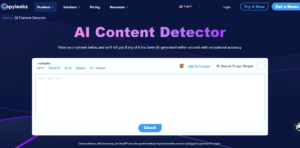Responsive or Adaptive Design for a website
The first step in designing an interface for any web project is to consider the potential target audience that we are trying to reach. The latest data shows that since the second quarter of 2015, mobile device users have outpaced laptop and desktop users in terms of Internet visits. And that gap continues to grow.
What are the main implications of this factor for us? Let’s look at this with a very simple example: suppose we start our own online business, namely e-commerce, where we sell goods. Let’s also assume that we decided to create our online store without considering all types of devices and focusing only on desktop users. Now let’s imagine our competitors who believe that their online stores selling products similar to ours are accessible and can be purchased from mobile devices. Conclusion: we lose a lot of potential customers who can’t even access our online store.
For all of these reasons, web apps have been developed for several years in accordance with responsive or adaptive design guidelines. What do they consist of? Do they mean the same thing?
The difference between responsive design and adaptive design
Responsive design is based on using the style rules in our CSS files. The content of a website adapts to the size of the screen on which it will be displayed. Variations such as a horizontal top menu visible on large screens that automatically hide on mobile screens and displays vertically when a button is clicked are typical responsive design behavior. Another typical behavior is that content that appears as columns on the big screen appears on the mobile screen on top of each other.
flexibility
This type of design provides more flexibility because it allows the application interface to be adapted to different types of screens. Desktops, laptops, tablets, or smartphones use the same source code. Of course, this requires a lot more work, but the result will be optimal.
Now there are also various HTML5 frameworks that provide us with these style rules or CSS code to make our applications responsive from the start. Some of the most popular are Twitter Bootstrap, Zurb Foundation, Google Material Design, and others. All of these projects are open-source, free, and very well documented, so we can use them for our own development.
Adaptive design
Adaptive design, on the other hand, is not as flexible because it relies on developing interfaces for different predefined screen sizes, meaning one interface for each screen size we choose. This has long been an important option for many companies, visible on all types of devices, at a time when mobile navigation was not as advanced as it is today. This type of development doesn’t require as much CSS or style code to achieve this customization because the process is based on determining the device on which the app is accessed and presenting the user with a particular interface to our app.
Conclusion
We recommend choosing a responsive design, albeit with extra effort because it is the most acceptable, gives the best results, and provides more resources for learning and design.

















